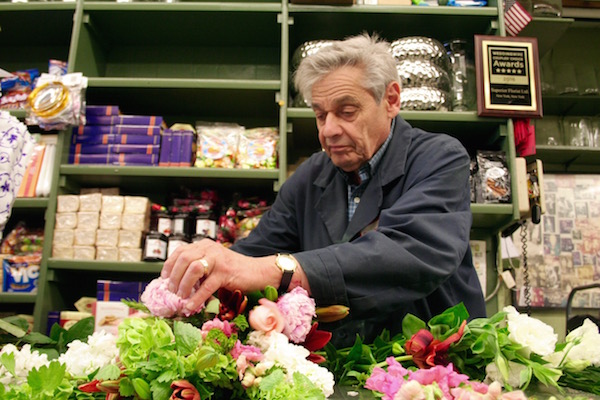
BY YANNIC RACK | Among all the captivating corners of the city, one block of Chelsea has stood out for more than a century.
Those who are lucky enough to trace their morning commute along W. 28th St. between Sixth and Seventh Aves. — the center of the neighborhood’s Flower District — are treated to a daily cornucopia of roses, carnations, orchids, and peonies that line the sidewalks there, along with palm trees 10 feet tall and greenery of all shapes and sizes.
But when Sam Rosenberg, who owns a small retail florist around the corner on Sixth Ave., walks down the street, he sees something else entirely — or doesn’t see it anymore, to be exact.
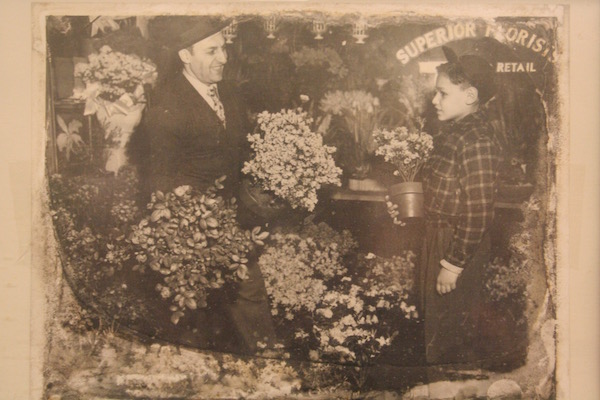
Many of the original wholesalers, who congregated in the area during the market’s heyday in the mid-20th century, are now gone — save for a few holdouts like Superior Florist (828 Sixth Ave.), which is still kept alive by three generations of Rosenberg’s family.
“When I started it was so different, you can’t imagine,” recalled the 78-year-old, taking a break from arranging blossoms and tying ribbons in his shop. The small space is still fitted with old-style aluminum countertops, and black-and-white pictures of the neighborhood from the 1930s line the walls.
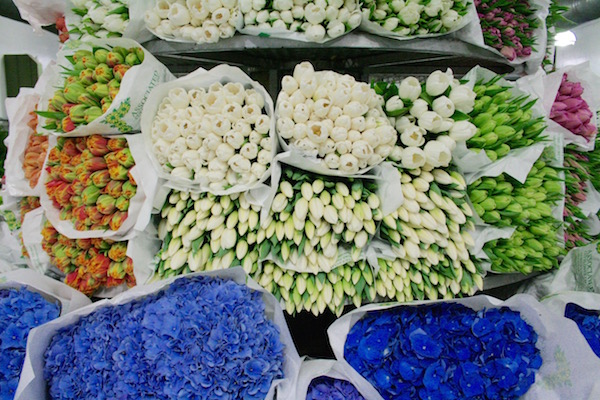
When Sam’s father Louis, an immigrant from Poland, first opened the business a few doors down, the surrounding blocks were home to over five dozen flower wholesalers and retail florists. More than 80 years later, only around 20 remain, including stores specializing in potted plants, silk flowers, and accessories.
“It was all flowers,” said Sam’s son, Steven. “Where the hotel is now, all flowers. Where the McDonald’s is, all flowers. The Bank of America, all flowers.”
Steven mainly runs the business now, one of the oldest flower shops left in the area, and is already grooming his own 21-year-old son to take over one day. He himself started making deliveries when he was in junior high school and says he basically grew up in the shop.
“I’m here since I’m in diapers,” he declared. “It’s in our blood.”
But business isn’t booming like it used to: skyrocketing rents, re-zoning that allows for hotels, changing tastes, and increased online sales have all taken their toll, forcing many shops to move to the suburbs.
“The world is selling just as many flowers, if not more, than it used to, except the channels of distribution have changed,” Rosenberg said. “For most retailers nowadays, there’s not much reason to come down to this neighborhood anymore.”
Specifically, florist wire services, including national brokers like FTD and Teleflora, and so-called “order gatherers” have cut into the business of traditional florists and wholesalers, says Rosenberg.
They broker orders using virtual storefronts and charge hefty commissions and fees from the actual florists, which often leaves a small profit margin for the brick-and-mortar merchants.
“Those orders, when they come back to us, you wind up with 54 cents on the dollar,” complained the younger Rosenberg, who just cancelled his FTD membership after more than 40 years.
“But the average consumer doesn’t know. And frankly, they don’t care. They just want their flowers.”
As a result of all these factors, the neighborhood florist is rapidly disappearing. Nearly 40 percent of America’s floral businesses have closed since 2000, with 14,000 remaining at last count, in 2013, according to census data.
The number of paid employees in the field has been cut in half, according to The New York Times, and a recent market report from IBISWorld glumly declared that “the florists industry has entered the declining stage of its life cycle.”
In New York, the beginnings of the Flower District can be traced back to the early 19th century, when vendors — often immigrants from Germany, Poland, Greece, and Ireland, who passed down their businesses — congregated near the Chelsea docks to sell flowers grown and cut on Long Island.
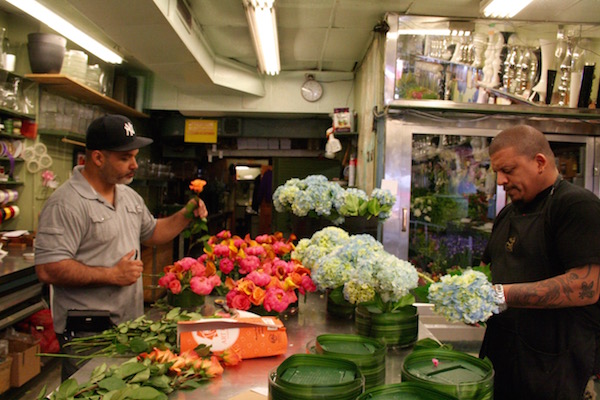
The market eventually moved away from the Hudson and over to Sixth Ave., where the sellers were closer not only to the elegant residences of Fifth Ave., but also the “Ladies’ Mile” shopping district, a swath of blocks that was home to many of the day’s most fashionable department stores, including Bergdorf Goodman.
Superior Florist stopped doing wholesale business decades ago, and the Rosenbergs’ main income now comes from weddings, funerals, and other events, as well as some long-time regulars.
But the traditional wholesalers, who mainly peddle their petals to other florists and designers, have also felt the squeeze — and are dealing with it in different ways.
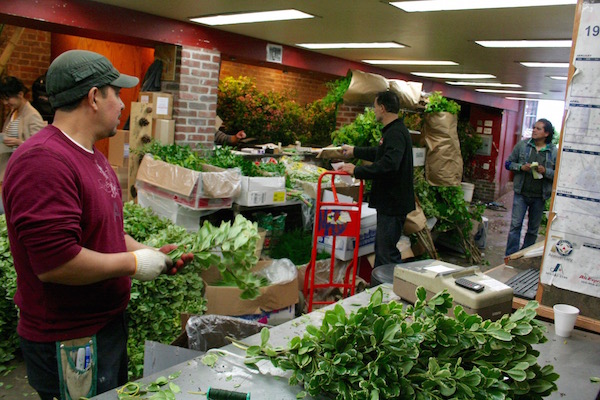
At Major Wholesale Florist (41 W. 28th St.) owner Louie Theofanis says the only reason his father’s store is still around is that he owns his shop and grows much of his own blossoms (he also deals in evergreens). For that purpose, he runs four family farms scattered in Virginia, New Jersey and upstate New York.
“We cut out the middleman, make some extra money,” said Theofanis, who runs the store with his partner and brother-in-law, Saki Tornesakis. “It’s getting very expensive to do business here.”
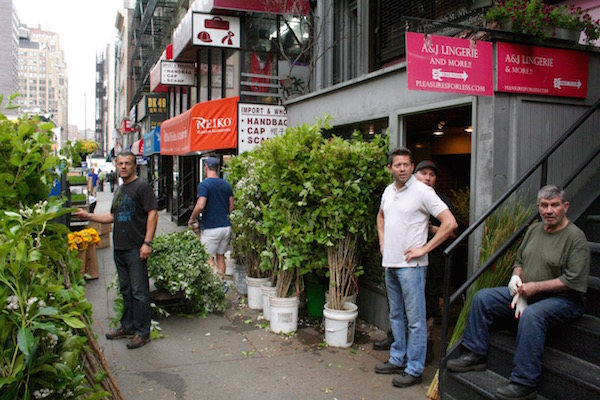
Theofanis’ father emigrated from Greece and started working at the flower market as a packer in the 1950s, when, he said, his countrymen still largely dominated the business.
He eventually started out on his own, cutting greens on farms and selling to market wholesalers, and finally opened his own shop with a partner when he was in his late 30s.
“You didn’t have to speak Greek, but 80 percent of the wholesalers were Greek-owned then,” the younger Theofanis recalled.
“When people immigrated here from Greece, they went to the flower businesses — it’s like the Italians; when they came, they went to the construction sites, because that’s where their families were working. Greeks came to the flower market, because that’s where their families were.”
In fact, he says his own hometown, a small beach community in Southern Greece, at one time could take credit for around 50 florists in the tri-state area, many of whom were his own customers as well.
“Let me put it this way: when I was in Athens in a cab, and I told the driver what part of Greece I was from, he said, ‘I bet you’re in the flower business.’”
If you want to get your pick at the best blossoms on offer at the flower market, you have to come early. Theofanis starts work before the sun comes up every morning, and most of the professional customers make a point of stopping by before 9am.
Buyers need a tax identification number to make wholesale purchases, which are typically marked up 400% before they reach shoppers at a retail florist, although several shops along the market welcome retail shoppers as well.
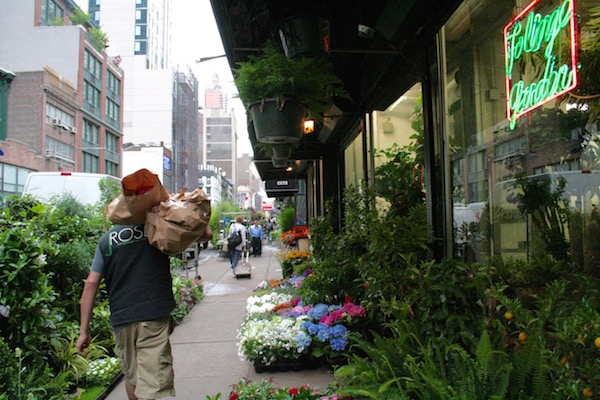
Rosenberg says he sells 40 to 50 types of cut flowers in a given week (of roses, for instance, he might have 10 additional variations) and moves up to 6,000 boxes of blossoms and greenery every year.
He brings in most of the flowers himself, from Colombia and Ecuador, Holland and California — the main suppliers nowadays, since the days of roses and carnations grown on Long Island, and orchids from New Jersey, are over.
“There used to be a lot of flowers grown in the United States. Some of the finest cut flowers in the world were grown in this area,” Rosenberg siad.
“Back in the day, if something wasn’t growing here, you couldn’t get it,” his father chimed in.
In order to stop any more florists from closing up or moving out of the city, the Rosenbergs and other vendors along the street banded together a few years ago to find a suitable space for them elsewhere in Manhattan.
With help from the Bloomberg administration, they sought to create a market hall along the lines of successful flower markets in other cities, like Boston and Los Angeles, but they never reached an agreement and eventually threw in the towel.
“The city tried to help us, but I think we shot ourselves in the foot, in that we didn’t finalize negotiations in areas where we should have,” said Gary Page, owner of G. Page Wholesale Flowers (120 W. 28th St.) and president of the short-lived and now defunct Flower Market Association.
“It was recognizing the pressure,” Page says of the relocation effort. “I mean, this area is not destined to be a wholesale flower market, unless someone steps in and landmarks it. But dealing with major land use in Manhattan is very difficult.”
Unfortunately, they found that few areas lend themselves to a market hall. The West Side piers, which were eyed for a while, quickly turned into hot real estate. In the Meatpacking District, the florists were likewise “dropped like a hot potato” once museums like the Whitney expressed interest, Page says.
Part of the problem, he adds, is that the market is simply not a priority for the city, since it gets barely any income from the flower shops.
“We’re just not a powerful enough force financially to shoulder our weight,” he said. “The city gets tremendous revenue from that hotel across the street; they get basically jack from us. So it’s hard to compete.”
“We’re small fish — it doesn’t pay for them to help us,” Theofanis agreed.
For Rosenberg, another issue was the mentality among the wholesalers, who are used to cutthroat competition and haggling over prices, and therefore tend to lean towards a friendly distrust of their neighbors.
“The thing about this business and this neighborhood in particular is, nobody trusts each other,” he said. “Everybody’s worried that I’m gonna steal your customer, you’re gonna steal my customer. I think that’s why they couldn’t come to any conclusion.”
In the meantime, the market keeps mourning as decades-old institutions close up and boutique hotels replace once-booming and blooming wholesalers.
Cathy Sviba is one of those who had to pack up and move out. She recently lost her store after 10 years on the block, and now runs an events business while working part-time as a designer at another store across the street.
The shop, Foliage Garden (120 W. 28th St.), resembles an actual rainforest filled with ceiling-high trees and shrubs.
Maryann Finnegan, a former landscape architect who also has a degree in horticulture, took over the store after her husband passed away a few years ago.
Her specialty, aside from the orchids that line the walls, are trees and other plants that she sells and rents to be used in film sets, photo-shoots, weddings, and corporate events — a niche business that is only possible because Finnegan owns her own greenhouses out in Blue Point, Long Island, from where trucks can be dispatched every day.
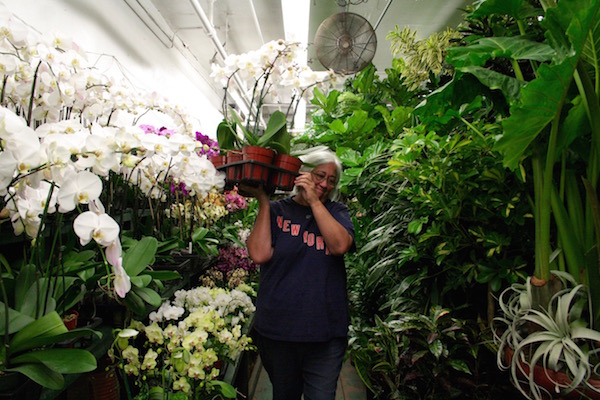
“If you need twenty Fiddle Leaf Figs, 17-inch, tomorrow, I’m the only person around here who can help you,” she said. “That’s really what differentiates us from everybody else.”
Once again, adaptation is the key to survival.
“As the industry has shrunk, because people like Whole Foods sell so much of the smaller material, you have to fill in with what you can,” says Finnegan.
Page, who shares a building with a handful of other wholesalers, says he’s not optimistic about relocating the market as a whole anymore — at least not right now. He rather thinks that some dramatic event, like a group of shops losing their leases all at once, will be required as a wake-up call for preserving the market.
Nonetheless, he said, “One has the feeling that maybe it will be too late.”
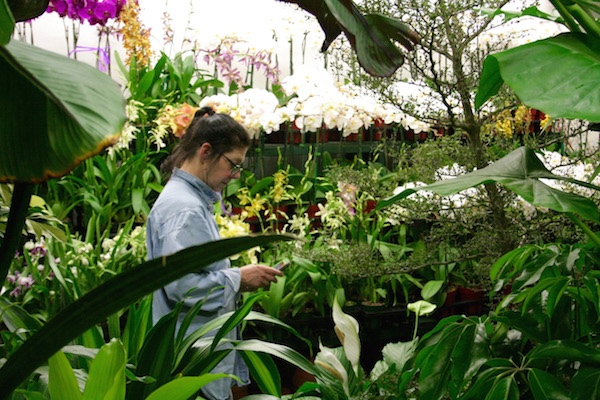
As more and more wholesalers are pushed out of the city, satellites in South Jersey, Connecticut, or even Pennsylvania, where trucks can pull up and the real estate costs a fraction of the price in Chelsea, are increasingly becoming the norm for florists and designers looking for their wares.
But that scattering is neither preferable for the vendors that have lived in the market for decades, nor for the customers that make the trip to W. 28th St. every weekday morning.
“So many of the customers that I talk to, they’re in the city, they want to be in Manhattan. Do they want to go some place out in Queens or up in the Bronx? No,” Page said.
“People come down here for that wholesale experience.”
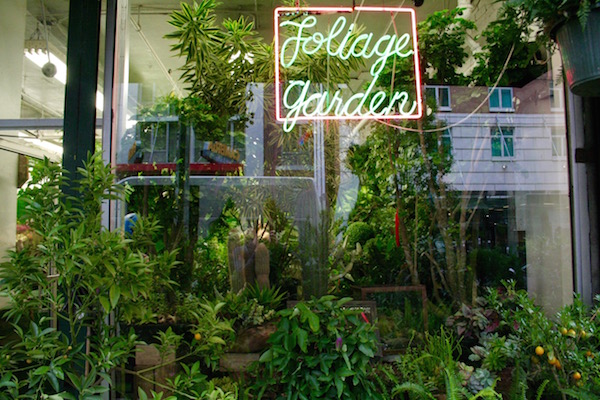
In the end, the flower shops will have to prove if they deserve their spot in the heart of the city, where they wouldn’t be the first historic industry to be slowly forgotten — to wither and die, so to speak.
“It’s unfortunate that the retail base has been squeezed — but it happens in every business,” Page mused. “You better be damn good if you want to last.”
































